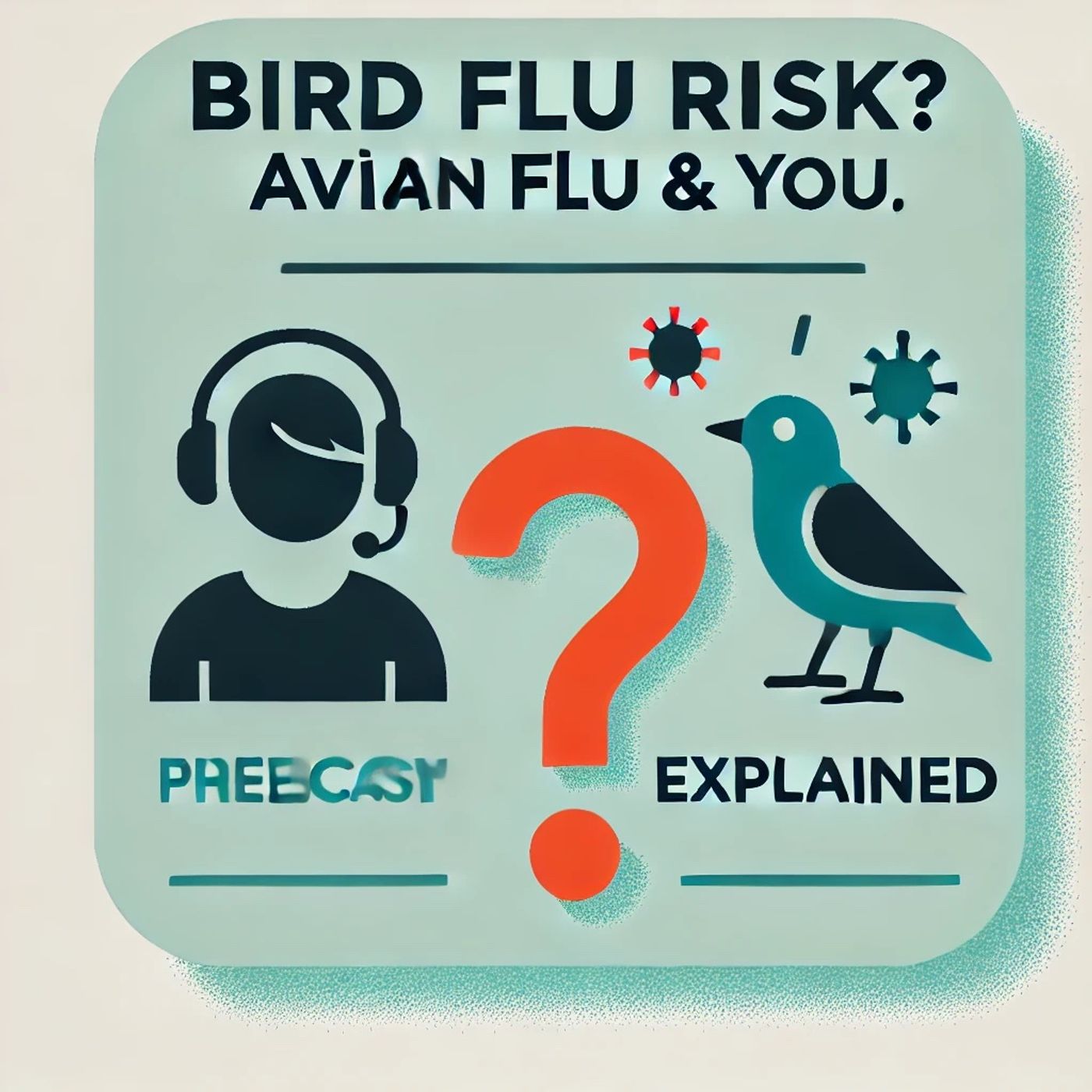Podcast Episode Details
Back to Podcast Episodes
Bird Flu 2025: Your Complete Guide to Understanding Personal Risk and Staying Safe in the Current Outbreak
You’re listening to Bird Flu Risk? Avian Flu & You, Explained. I’m here to help you understand your individual risk when it comes to avian influenza, also known as bird flu. Let’s break it down together.
First, what’s going on with bird flu in 2025? According to the CDC and recent reports from the World Health Organization, bird flu continues to circulate among wild birds, poultry flocks, and occasionally, dairy cows. Human infections remain rare, and as of this summer, experts report no sustained spread between people. Most people are not at high risk—so take a breath.
Now, let’s talk about risk factors. Your job can make a difference. Poultry and dairy workers, farmhands, veterinarians, park rangers, slaughterhouse staff, and those handling live birds or cattle have a *higher* risk, especially if protective measures aren’t strict. If you own backyard birds, hunt wild fowl, or help care for sick or dead animals, your risk is higher than average. For most city dwellers or those without animal contact, the risk is very low.
Where you live is another factor. If you’re in a rural area near poultry farms or places where new animal cases have popped up, your chances of exposure are slightly higher. For most urban or suburban residents, the risk is minimal.
Age and general health matter too. Older adults and people with chronic illnesses are more likely to get seriously ill if infected. Young children, on the other hand, tend to have the lowest risk of severe outcomes. For most healthy adults and teenagers, bird flu poses little threat based on current evidence.
Let’s try a quick risk calculator. Imagine you’re a 45-year-old dairy worker in a county with recent cow outbreaks and you work without full protective gear. Your risk: moderate, especially if exposed to sick animals or raw dairy. You’ll want to follow all workplace safety protocols, wear masks, gloves, and wash hands well.
Now, picture an office worker in a big city, age 30, no farm animal contact. Your risk: extremely low. You can live your daily life without worrying about bird flu, unless an outbreak happens very close by.
Maybe you’re a 70-year-old retired teacher with diabetes, living in a town near poultry farms but have no direct animal contact. Your risk: still low, but if you walk in areas with dead birds, take care—report them and avoid handling them.
If you’re in a high-risk job or health group, pay attention to symptoms like fever, cough, or red eyes—especially if you’ve had recent animal exposure. Use all provided protective equipment at work, avoid consuming unpasteurized milk or undercooked poultry, and clean your hands often.
For everyone else—especially without animal contact—no need to worry day-to-day. Cook eggs and poultry fully, skip raw milk, and enjoy the outdoors as usual.
When should you be vigilant? If your area sees new animal outbreaks, your employer notifies you of risks, or you develop flu symptoms after direct animal contact, seek medical advice promptly.
But for most, bird flu is a concern for farms and vet clinics, not the general population. Stay informed, follow basic food safety, and go on with life.
Thanks for tuning in to Bird Flu Risk? Avian Flu & You, Explained. This has been a Quiet Please production. Join us next week for more, and for me, check out Quiet Please Dot A I.
For more http://www.quietplease.ai
Get the best deals https://amzn.to/3ODvOta
Published on 1 week, 1 day ago